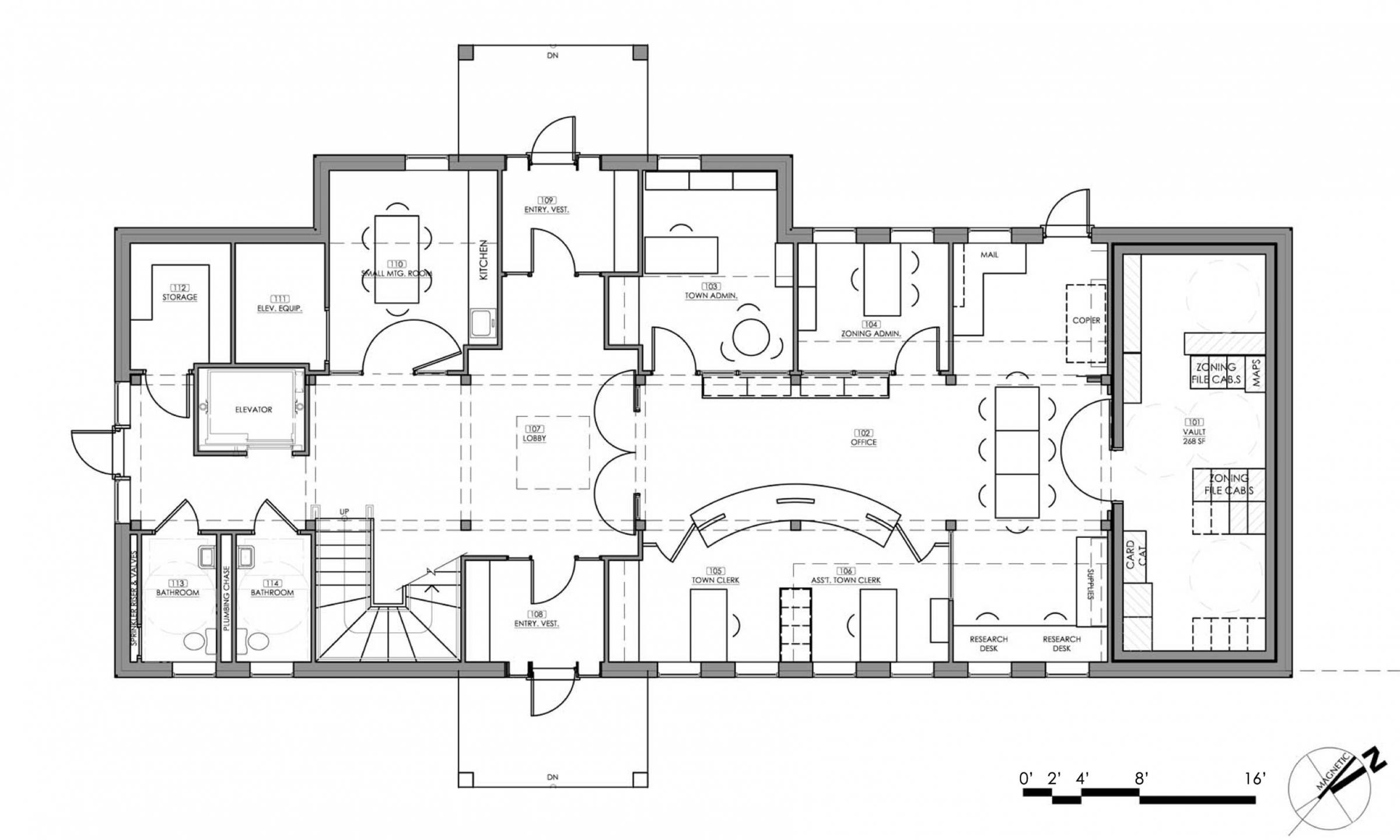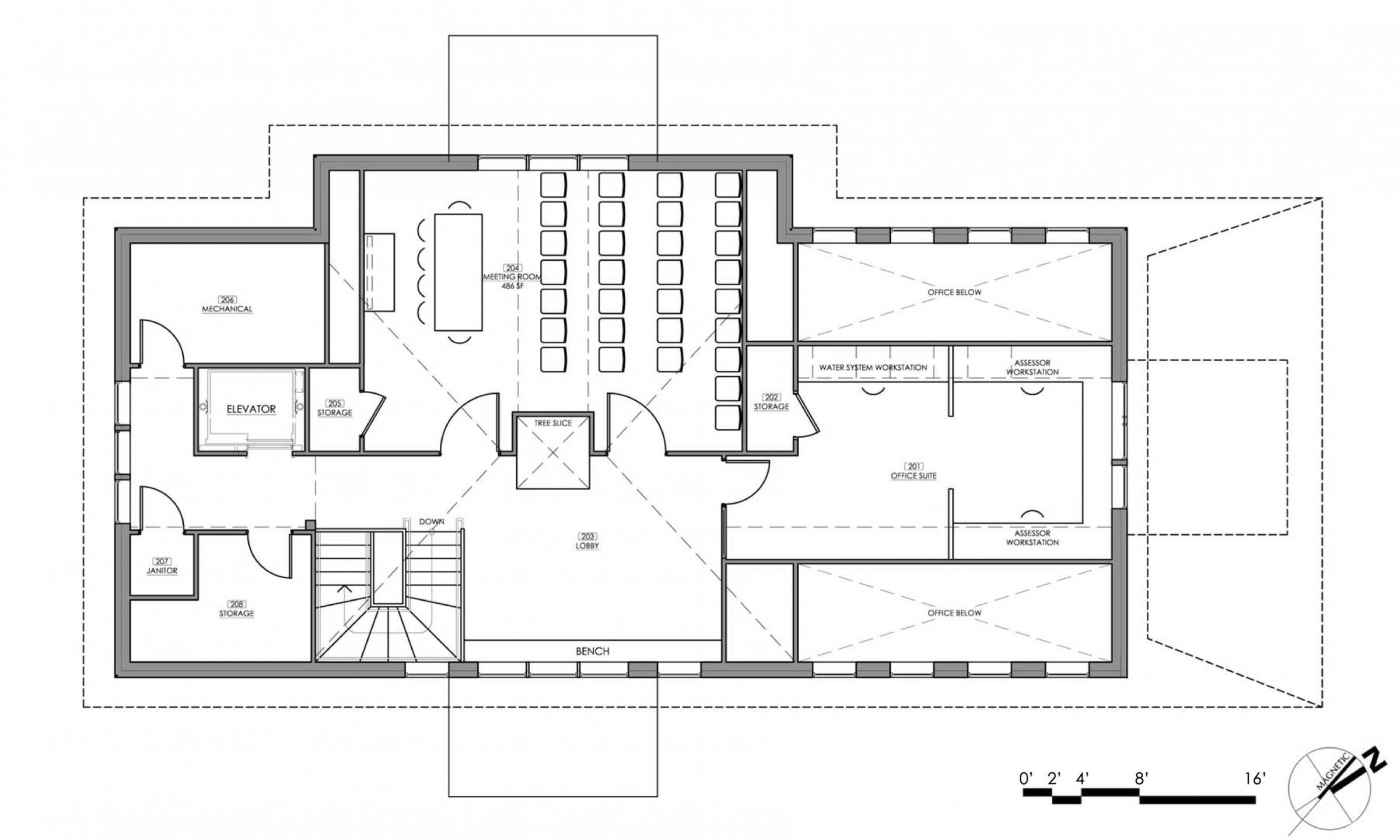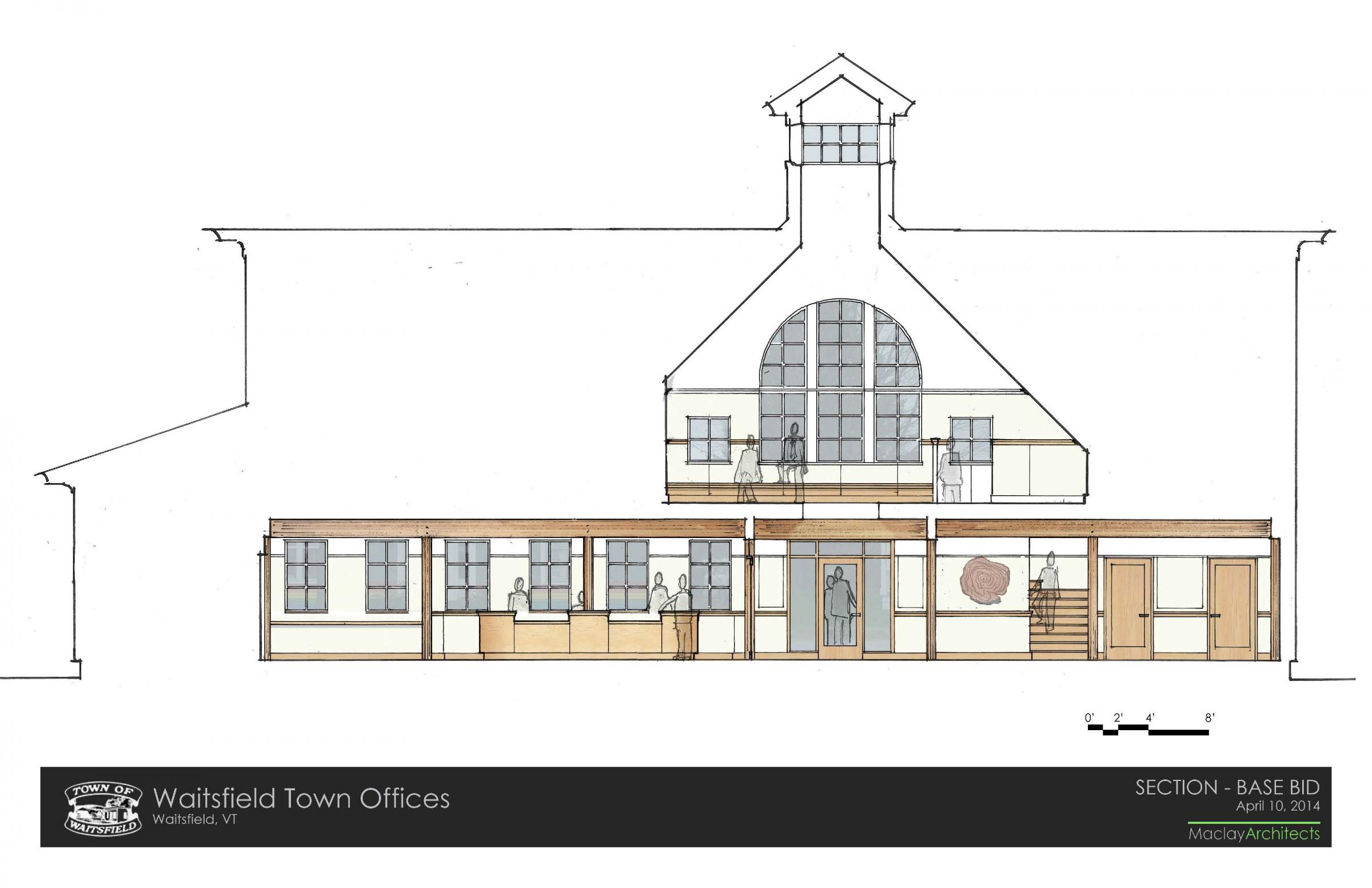Project Description:
Maclay Architects was initially hired to explore several possible project sites for renovation or new construction of the new town offices. The town offices have outgrown their current location in the lower level of the town library. They are not wheelchair accessible, lack adequate parking and were flooded during tropical storm Irene. After selecting a lot in the historic village that is out of the flood zone, design began for a new 4,000 square foot town office. The new facility will provide space for town offices, increased vault storage, research stations and a meeting space. Landscaping and pathways aim to further enhance the increasingly pedestrian-friendly village. The building will feature a super-insulated, net-zero ready envelope and extensive natural daylighting, while retaining a scale and aesthetic fitting of the historic village context.
Building Type Summary:
Address:
Elevation:
Lat. / Long.:
Location Type:
Köppen Climate Type:
Climate Region:
Solar Insolation:
Annual HDD :
Annual CDD:
HDD Base Temp:
CDD Base Temp:
Occupancy Type and Details:
6 full time occupants 8 am - 5 pm weekdays. Community meetings occur 2-3 nights per week of 10-20 people.
Conditioned Floor Area:
Conditioned Building Volume:
Multiple buildings?:
Total floor area of project (all buildings):
Historic?:
Completion date:
Site description:
The site is located along Route 100 in historic Waitsfield, VT. There was an existing driveway and farmstand on the site. It is an infill site with mixed use buildings to either side. It is a flat site with rain gardens and incorporates street trees to integrate with town streetscape. The site lighting is controled to minimize impact to neighbors.
Energy Highlights:
A ceiling fan is used in the main space to reduce cooling needs, reduce mechanical ducting, and provide occupant comfort.
Electric Utility Company:
Datasets and Utility Bills sources and reliability:
Source to come once completed and occupied for one year.
Subslab assembly:
5” XPS under the slab, urethane isolation blocks under structure
Slab edge assembly:
3" XPS on interior to footings
Above grade wall assembly:
3” exterior polyiso, 2x8 dense pack cellulose
Cathedral ceiling assembly:
5” closed cell spray foam, 11” dense pack cellulose
Process:
The design team participated in an integrated energy charrette early in the design phase to meet the project goals of a high performance building.
Special architectural measures:
Daylighting is achieved with high windows, a cupola, and glass floor to bring light into the center of the space. Open offices also provide reduced mechanical systems and lighting needs.
Energy Strategies:
Air source heat pumps for heating and cooling, ERV for ventilation, and off-site ground mounted net metered photovoltaics.
Energy Use and Production Documentation:
Subslab R-value:
Above grade wall R-value:
Cathedral ceiling R-value:
Average window U-factor:
Solar Heat Gain Coefficient:
Visible Light Transmittance:
Project Photos:





Number of Bathrooms:
Scope Description:
Town offices, vault, research space, meeting room
Site conditions:
Other Purchased Fuels Description:
Some propane will need to be purchased for the onsite back up emergency generator.
Summary of enclosure strategy/description:
R40 walls, R60 roof, R20 subslab, 0.10 cfm50/sf of above grade surface area. Continuous air, moisture and vapor barrier systems.
Window Description:
Paradigm
Project Team:
Team Member:
Team Members:
DESIGN TEAM:
Architect - Maclay Architects
Civil - Wilcox and Barton
Mech/Plumbing -Kohler and Lewis
Structural - DeWolfe Engineering Assoc.
Elec/Fire -William Bissell
Cost Estimator - Erickson Consulting
Landscape - SE Group
BUILDER:
Millbrook Building & Remodeling, Inc.
COMMISSIONING:
Mech - Thomas Engineering Association
Envelope - Common Sense Energy
